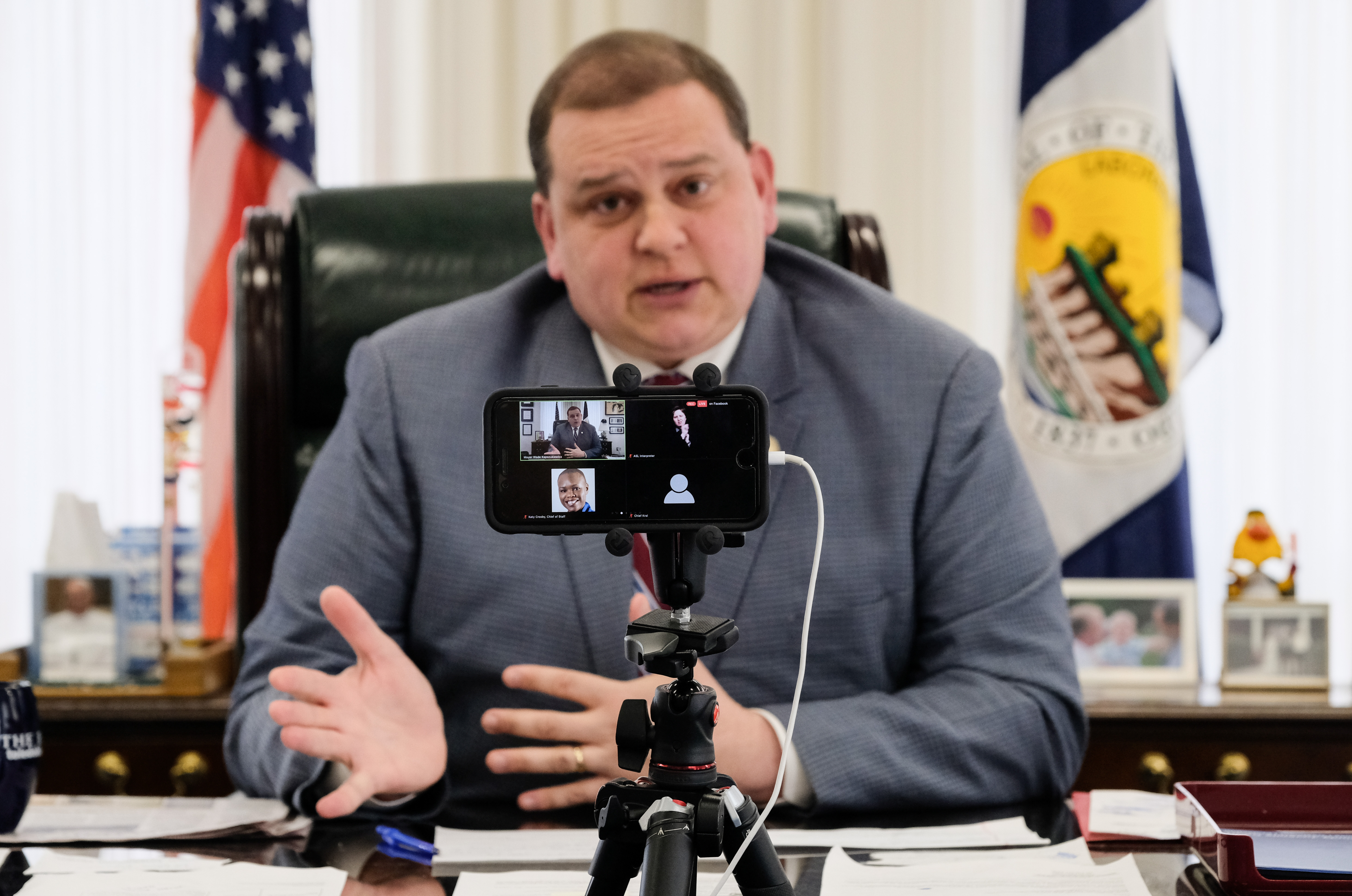Ohio mayors hope next round of federal stimulus can plug budget holes
By Liz Skalka / The Blade
Fri, 22 May 2020 18:17:22 GMT
The same day that state jobless figures revealed nearly 17 percent unemployment in April, municipal leaders renewed their call for federal funding to plug the gaping hole in their budgets normally fed by local income taxes.
Sweeping congressional aid packages to help Americans weather the coronavirus pandemic, so far, haven’t included any aid for small cities, Ohio mayors reiterated Friday.
“The city of Toledo hasn’t received one penny of relief from anyone, period. Not one. Not one nickel,” Toledo Mayor Wade Kapszukiewicz.
Looking to another relief package, House Democrats have passed the $3 trillion HEROES Act, which would, among other provisions, dole out nearly $1 trillion in emergency relief to struggling state and local government that have seen revenue sources dry up during the pandemic.
Senate Majority Leader Mitch McConnell said last week he wouldn’t support a new coronavirus relief package without ensuring that it removes liability from companies that bring back workers during the outbreak, leaving the legislation at a standstill as cities increasingly look to lay off and furlough employees.
In the meantime Ohio cities that derive a majority of their revenue from income taxes are especially hurting as unemployment reaches historic levels. The Ohio Department of Job and Family Services on Friday said April unemployment reached 16.8 percent, up from 5.8 percent in March and 4.1 percent during the same period in 2019.
In the first two months of the pandemic, nearly 40 percent of low-income workers have lost their jobs, said Wendy Patton, a senior project director for Policy Matters Ohio, a progressive think tank.
“This is an unusual crisis — a pandemic recession,” she said. “With so many people without income to spend, cities and state governments simply don't have the income and sales tax revenue they need to perform a central function.”
Income taxes make up roughly 70 percent of the municipal operating budgets in Toledo — which faces a $50 million deficit and has laid off some 320 employees — and Dayton.
“When people stop working and are not able to work, it takes a really direct hit very fast, and Ohio cities will feel the pain of this economic depression nearly first in the country, and it will be deeper and harder to sustain,” said Dayton Mayor Nan Whaley, who added that, without federal help, her city will need to slash its budget by 18 percent.
Those cuts come from the “not very fancy, but very important services” cities provide, such as public safety and trash pickup, Ms. Whaley said.
Even as Ohio’s economy calibrates to a new normal — Thursday was the first day restaurants were allowed to reopen their dining rooms — Ms. Whaley doesn’t foresee much improvement in Dayton’s fiscal outlook.
And officials have admitted that reopening Ohio’s economy will likely lead to an uptick in virus infections and deaths.
Indeed the numbers of new infections, hospitalizations, and intensive-care unit stays on Friday again came in above the average seen over the past two weeks. The state reported 624 new cases, 50 more than the daily average experienced over the past 21 days. Ohio has now had a total of 30,794 infections. Deaths, however, had a lower day: 36 compared to the daily average of 41.
There were 84 hospitalizations and 19 ICU stays, both slightly above average.
Gov. Mike DeWine and health director Dr. Amy Acton have watched 21-day averages for signs of trends in the battle to suppress infections.
Lucas County on Friday reported a total of 2,091 coronavirus infections and 207 deaths.
Mr. DeWine too has anticipated extended fallout from the pandemic when it comes to state coffers. He opted for $775 billion in budget cuts this year instead of tapping the state’s $2.7 billion rainy day fund, which he said would likely be needed down the line.
“Every week that goes by, the economic realities for our communities get more serious,” Ms. Whaley said. “We know that our community, as we go into the next month, is going to have considerable issues and pain everywhere.”
Ohio’s largest city, Columbus, and its five largest counties — Cuyahoga, Franklin, Hamilton, Summit, and Montgomery — received $778 million in government aid in the federal stimulus package, but the money is restricted to costs associated with the pandemic, which doesn't include revenue replacement. The state also is sitting on another $1.2 billion from the federal government earmarked for local municipalities.
The Ohio Senate passed legislation this month that would distribute $350 million of those funds to local governments to cover coronavirus expenses, such as protective equipment and emergency workers. It hasn’t yet gone to a full vote in the House.
Senate Bill 310 would give Toledo about $10 million, Mr. Kapszukiewicz said.
“That is nowhere near what we're going to need to get out of this crisis,” he said. “Even baking into the cake that $10 million, we still have tens of millions of dollars of shortfall that we have to figure out how we're going to balance.”
Staff writer Jim Provance contributed.

Toledo Mayor Wade Kapszukiewicz conducts a virtual Wednesday's with Wade from his office on April 15, 2020, in Toledo.